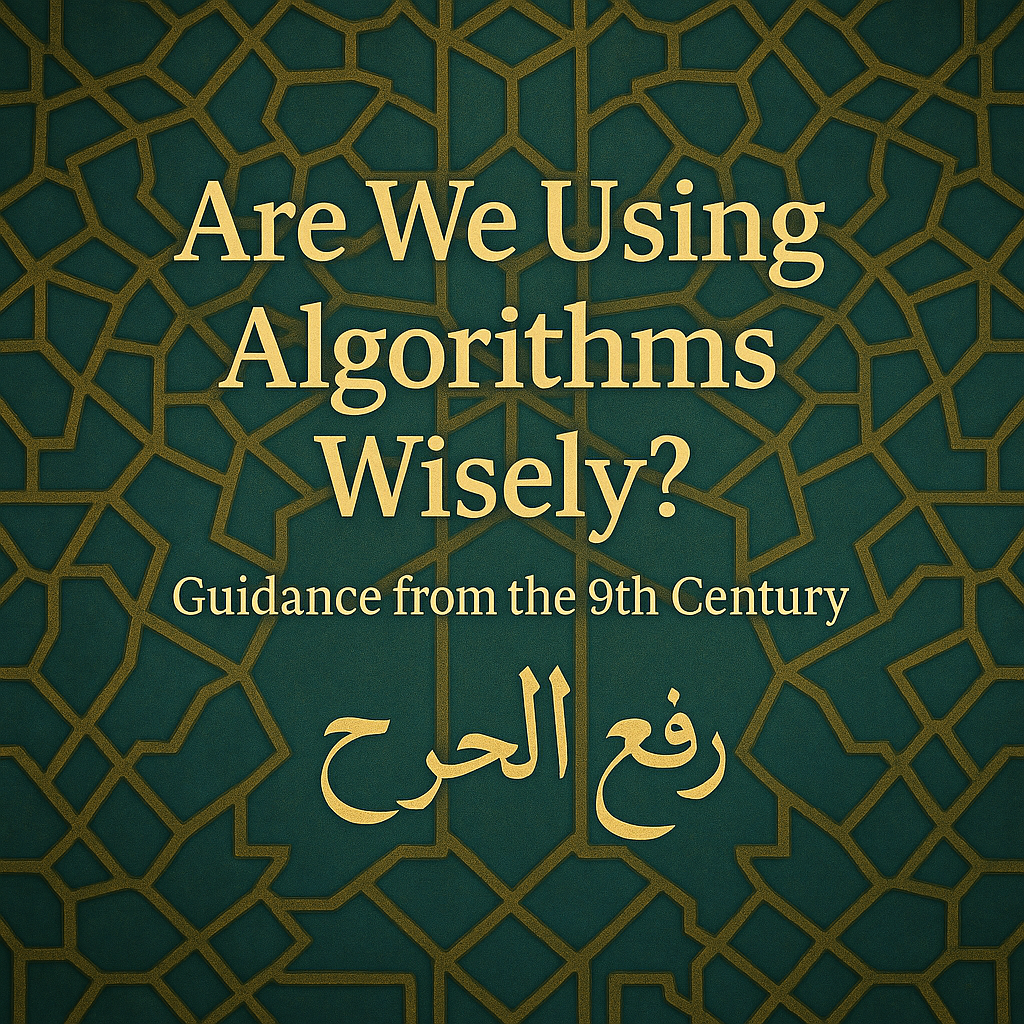
In our age of AI, IoT, and real-time signal processing, it’s tempting to believe that algorithmic thinking is a modern invention. But over 1,100 years ago, in the heart of the Islamic Golden Age, two extraordinary thinkers were already shaping what we now call systems engineering: Muḥammad ibn Mūsā al-Khwārizmī and Yaḥyā ibn ʻAdī al-Kindī.
Their brilliance wasn’t just in what they knew—it was in how they thought.
The Power of Critical Thinking
Al-Khwārizmī and Al-Kindī lived in a time when knowledge was unified. Mathematics, philosophy, astronomy, and medicine were seen as part of a single, coherent worldview. This intellectual breadth allowed them to see connections others missed.
In some ways, generative AI attempts to mimic this cross-disciplinary reach—drawing associations across vast domains with billions of model parameters. But unlike Al-Kindī and Al-Khwārizmī, it operates without commonsense, without understanding, and without true context. This alone makes AI fundamentally inferior to the critical thinking of these scholars. Their minds weren’t just expansive—they were disciplined, purposeful, and deeply structured.
They also had something rare today: time. Freedom from the pressure to publish or the noise of constant alerts, they dedicated themselves to real understanding. Without emails, 24hour news feeds, or KPIs pulling at their attention, they achieved the kind of clarity that produced lasting contributions to mathematics, science, and cryptography—many of which still shape our world today.
Just as the Latinized name of Al-Khwārizmī gave rise to the word algorithm, the idea behind algorithms—structured procedures for solving problems—is far older and more global. Across different civilizations, these ideas took root in unique yet strikingly similar ways.
In classical Tamil, the word சூத்திரம் (sūthiram) has long referred to concise formulas or rules. Found in ancient grammar, mathematics, and philosophy, a suthiram was a compact, logical step—an algorithm in spirit. Tamil arithmetic manuscripts used them to express procedures for multiplication and permutations, echoing the same structured problem-solving seen in other cultures.
Even today, Tamil retains this legacy. In schools and textbooks, சூத்திரம் appears alongside the transliterated அல்காரிதம்—a reminder that algorithmic thinking has deep, indigenous roots. The algorithm is not a modern invention. It’s a universal pattern—and every culture has its own word for the thread.
This global legacy reminds us that algorithms were once tools of understanding, not just instruments of automation. If we are to use algorithms wisely today, we must restore that spirit: clear purpose, cultural context, and conscious design.
And Yet, Here We Are
Today, we automate decisions, and design systems that affect real lives. The legacy of Al-Khwārizmī and Al-Kindī challenges us to ask:
Are our algorithms truly serving people—or just chasing efficiency?
Nowhere is this more urgent than in AI. As we build increasingly powerful models, the temptation is to optimize for performance at all costs. But Al-Khwārizmī reminds us that an algorithm must be understandable. And Al-Kindī reminds us that it must serve human reason and values.
This is precisely why Real-Time Edge Intelligence (RTEI) is so important. RTEI combines human reasoning, grounded in deterministic DSP algorithms, with digital reasoning, driven by machine learning.
But there is a crucial difference: digital reasoning can hallucinate. It can invent patterns and correlations—what we sometimes call “creativity”—but it has no ethics, no intent, and no understanding. Human reasoning, on the other hand, brings structure, purpose, and responsibility.
RTEI is not just a technical fusion. It is a moral architecture: one that safeguards the unpredictability of AI with the reliability and interpretability of classical DSP. In a way, it echoes the very legacy of these scholars: logic and structure, guided by ethics and accountability.
A Principle That Still Applies in 2025
They remind us that clear, ethical, and deeply structured thinking transcends time.
This is where the classical principle of رفع الحرج (removal of hardship) becomes strikingly relevant. It wasn’t just about compassion—it was about reducing confusion and unnecessary complexity in systems.
RTEI carries this legacy forward: combining the reliability of DSP with the adaptability of ML to build systems that are powerful, yet clear and responsible. In a world where generative AI can hallucinate, we need that balance more than ever.
Sometimes, the most radical idea is to slow down and think like it’s the 9th century!

